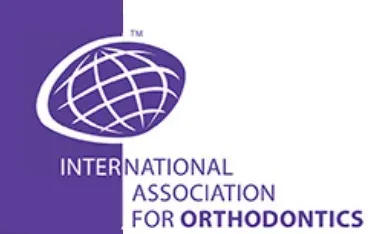May’s Tip

I started to use self-ligating brackets, and the arch wires are constantly lacerating my patient’s cheek. Why is this happening?
By Dr. Adrian J. Palencar, MUDr, MAGD, IBO, FADI, FPFA, FICD
May 2021
These are the three most common reasons why this is happening:
- The arch wire was not cut off flush distally to the molar tube
- Even if the arch wire was cut off flush, it will become longer posteriorly, as the misalignment improves
- The inherent properties of a small diameter leveling arch wires (a .014, .016, .018 NiTi/SS) in self-ligating brackets is low force and low friction. Therefore, the arch wire has a proclivity to slide laterally by the forces of mastication, thus precipitating laceration of the cheek.
This does not happen to the same degree with twin (Siamese) brackets, particularly when the arch wire is “figure 8” tied with the elastomeric tie.

The remedy is to place a STOP to prevent sliding of the arch wire as follows:
- “Dimpled” NiTi arch wires are available from the Orthodontic supply companies. These dimples are fabricated in the middle of the arch wire to prevent sliding. There is a larger dimple in the maxilla and smaller one in the mandible.

2. Crimpable stops are placed and crimped to the arch wire with the crimping pliers or heavy wire cutter. Crimpable stops are different for the round wire and different for the rectangular wire and may be placed anywhere on the arch wire. Unfortunately, they do not hold well on small diameter arch wires, i.e. a .014, .016 NiTi/SS.

3. “V’ bend stops are placed with the “V” bend pliers anywhere on the arch wire. They hold well even on the NiTi arch wires with the exception of a .014 NiTi. If the “V” bend does not hold, just anneal very small area on the arch wire (see paragraph 4)

4. Bend back or Cinch – is a very firm and definite STOP, just slightly more complicated. The author proposes leaving the arch wires about 10.0 mm longer past the molar tubes. Then anneal (heat treat) the last part of the arch wire for exactly 2 seconds, these annealed ends will become dead soft. The clinician may use cigarette lighter or match for this purpose and it works well on NiTi, Beta Titanium and SS arch wires. After the arch wire has cooled off, insert it, ligature tie or close the latches and bend back distally to the molar tubes with the Long beak pliers.
References
- Cerum Ortho Organizers catalogue
- Rondeau Seminars, Case Finishing; 113 – 114,
